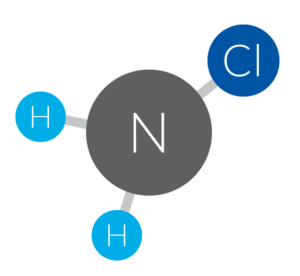Should We Use ORP to Measure Monochloramines?
 ORP stands for Oxidation Reduction Potential, a substance’s potential to oxidize or reduce another substance. ORP is used to measure the disinfection potential of water. ORP can be useful because it takes into account all of the substances in the water.
ORP stands for Oxidation Reduction Potential, a substance’s potential to oxidize or reduce another substance. ORP is used to measure the disinfection potential of water. ORP can be useful because it takes into account all of the substances in the water.
Monochloramine, often referred to as chloramine, is a widely used and relatively safe disinfectant that has been used to disinfect drinking water since the early 1900s. Monochloramine has several benefits that make it useful compared to chlorine, including high-dosage superchlorination sometimes used in Legionella remediation.
Compared to chlorination or superchlorination:
- Monochloramine residual is more stable and lasts longer than free chlorine residual.
- Monochloramine is superior to free chlorine at penetrating the biofilm.
- Monochloramine is less likely to have taste & odor complaints.
This can be helpful for a Legionella water management program and Legionella testing.
As noted, ORP measures the oxidative potential that can kill waterborne pathogens rather than measuring the residual concentration of a particular chemical. As such, while ORP can distinguish between pure solutions of monochloramine and dichloramine, for example, it cannot distinguish between monochloramine and organic chloramines at levels used in treated water. And ORP levels that equate to safe drinking water treated with chloramines tend to be lower than the ORP of water treated with chlorine. Sufficient studies have not been performed linking ORP levels with safe levels of residual monochloramines in the water. As a result, ORP is not a reliable measurement of monochloramine residual in water.
While ORP is not appropriate for monochloramine measurement, this does not mean that monochloramine residual cannot be accurately measured. Contact the team at Legionella Control Systems to learn about the best methods of measuring monochloramine and treating water for healthcare facilities, hotels, nursing homes, and manufacturing.







